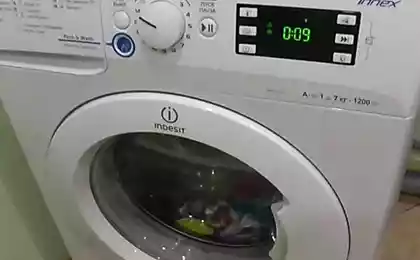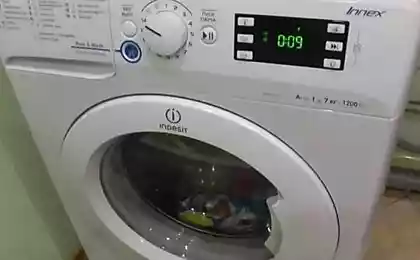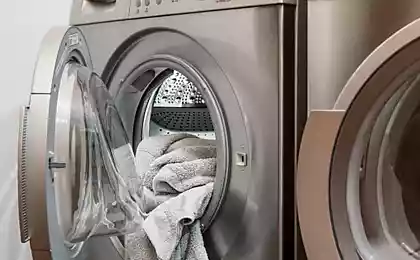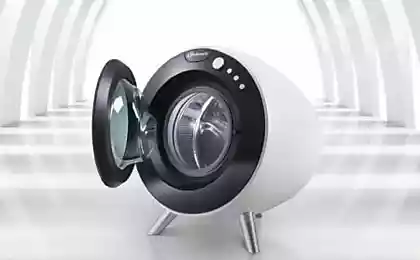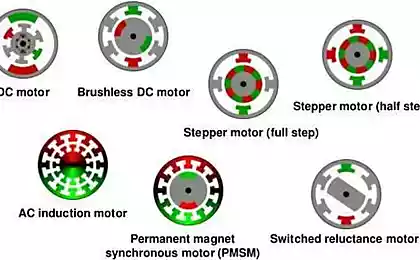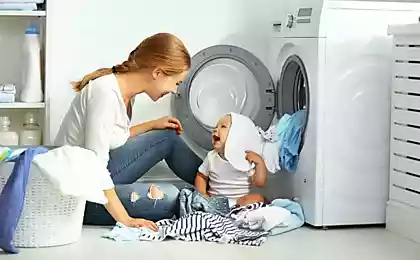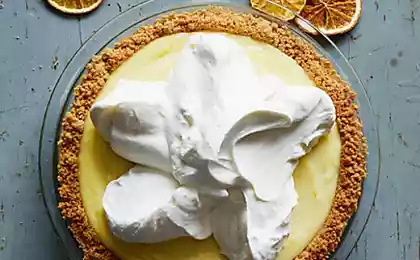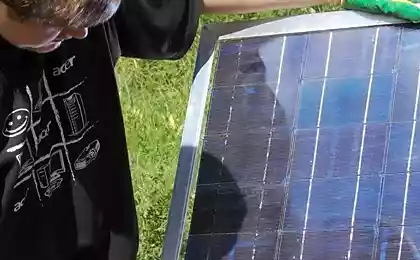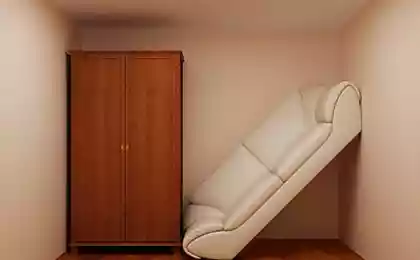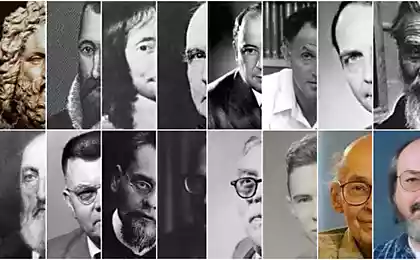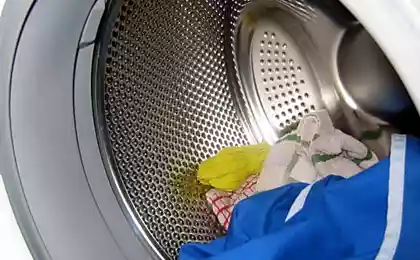1507
How things have been invented ingenious
Washer
In the XIX century, the washing process was, as many believe, the most time-consuming of all the hassle of housewives. Indeed, apart from the heavy manual labor in the process of washing clothes and washing agents were used that are harmful to the skin of hands. Automation washing at the time was not yet, all processes - soaking, main wash, rinse and spin drying were performed manually.
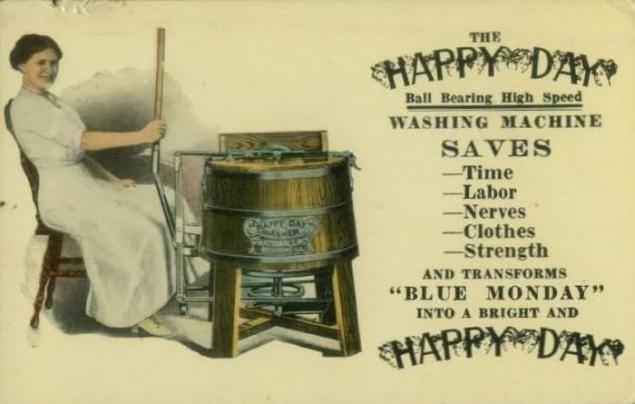
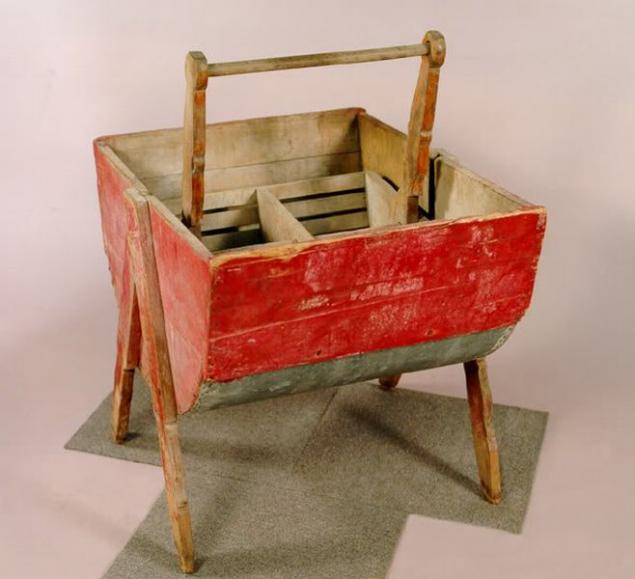
By the end of XIX century appeared the following type washing machines that are already in something reminiscent of the old Soviet-era samples of the "Volga" - reminiscent of the barrel, including the existence of a mechanism for pressing.

In this type of washing machines for actuating mechanism operated manual labor was also used. The man behind the handle of the rotating wheel, which aired through the gears move in a tank of water in which there do laundry. Washing machine of this type create the excitement of the water inside the tank, whereby the clothes rubbing against each other, and thus there was a process of washing.

Meanwhile, the washing machine became iron. Using electric motors, giving vibration led to the destruction of the tank washing machines are made of wood. Replacing wood with iron enabled soon carry another improvement. Earlier, housewives had to manually heat water on the stove, carry out and pour the heated water into the washing machine. Now iron electric washing machines have their own heating element - PETN. By the way, today Tan is one of the most common causes of breakdowns and repairs washing machines. On PETN eventually formed scale, which leads to poor heat transfer from PETN to water, thereby heating element overheats and breaks.
Toilet paper
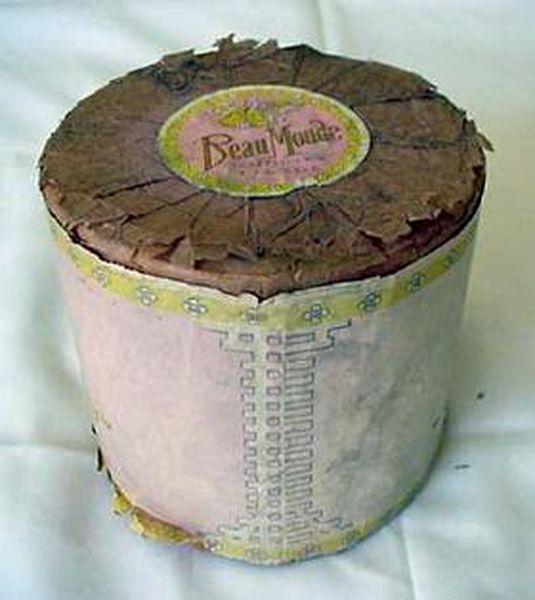
How did our ancestors had to dodge that after spravleniya natural needs to make basic hygiene! Francois Rabelais believed that the nicer way to do this with a live duck. In ancient Rome, adapted to the needs of the sponge: it is attached to a stick and after use was placed in a bowl with salt water. Vikings wipe hairballs, Native Americans - all sorts of leaves and cobs of corn. French kings approached this issue very elegantly and doing it with lace and linen rags.
Use in this case the Chinese were the first paper, but not mere mortals, but only emperors. Much later in the paper, and passed the rest of the world: in the course went old newspapers, catalogs, almanacs. Only in 1857 New Yorker Joseph Gayetti occurred to cut the paper in neat squares and pack into bundles. He was so proud of his invention, that each sheet of typing your name. Set the name of the man who invented fold toilet paper rolls, it is not possible: the first such steel coils to produce an American paper mill «Scott Paper» in 1890.
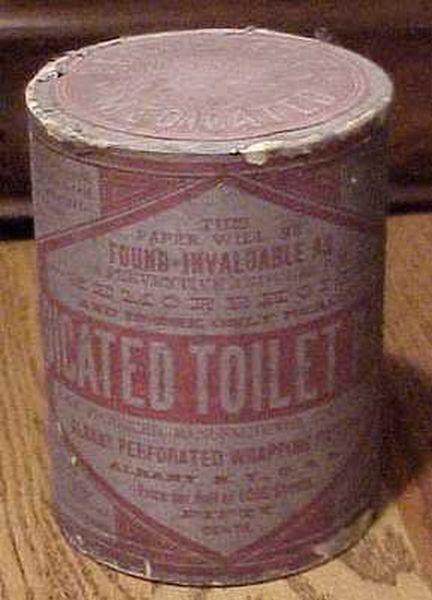
Comb
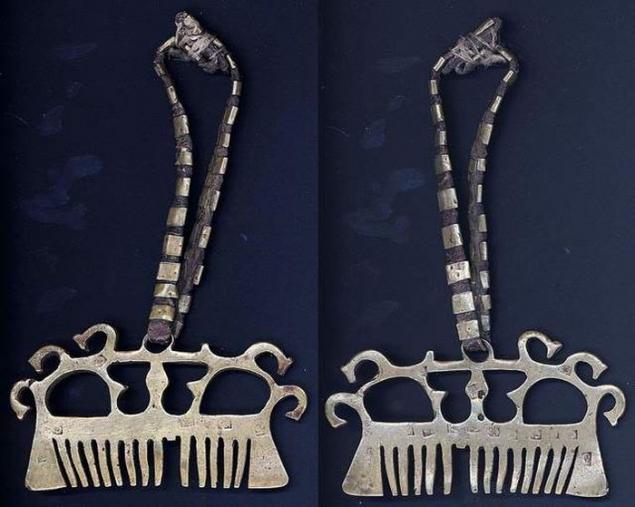
The most ancient combs used by inhabitants of the earth can be considered fish skeletons. It is not known where and when it was first made a hairbrush, but one of the oldest ridges was found during excavations on the territory of ancient Rome. It was made from animal bone wide and eight to handle manually cut teeth, located in the region 0, 2 cm apart. Later hairbrush also made of wood, coral, ivory, tortoise shell and horns of various animals. This material was used for the ridges until the middle of the XIX century. In 1869, two brothers - Isaiah and John Hyatt - invented celluloid, which completely changed the production of combs. Elephants and turtles were saved from complete destruction, and people get cheaper ridges of material that looks very similar and coral, and ivory, and tortoise shell.
Refrigerator

At the beginning of the XX century, more precisely in 1910, the United States invented the first home refrigerator, which had mechanical cooling. A year after the opening of this machine was perfected and subjected to various modifications. Just then, a year later, in 1911, a successful American company "General Electric" ventured the first to start production of the refrigeration unit called "Odifren", which was intended for use both at home and in trade. This chiller has received the name of its creator, French physicist Marcel Odifrena, and is quite different from the original design. But that's not all advantages of modern machine. The machine, which was invented by the French physicist who first worked for the automation! Its construction Odifren developed and patented in 1895. The advantages of the revolutionary chiller excellent heat treated, no valves, seals and easy maintenance. Change the belts and lubricate the bearings had only one or two times a year. The company "General Electric" quite successfully produced such refrigeration systems for seventeen years, until 1928.
Meanwhile, not only the "General Electric" engaged in production of refrigerators. Another domestic refrigerator with automatic control has developed and created a scientist and engineer Copeland, and in 1918 the company "Kelvineytor" without losing time, launched the machine in production. During the year the company was made sixty-seven of these refrigerators.
Time passed, and in 1925 the United States began to constantly produce refrigeration units with mechanical cooling. During the year, the conveyor descended 64,000 chillers, which gave a starting point the rapid growth of production in this area, which, however, slowed down in the 30s - the fault of the economic crisis. The first refrigerator with a cooling machine was cumbersome structure: its volume is about five times the capacity of the storage products, and held it about a square meter floor. For the manufacture of wood applied enclosure and protect the thermal insulation cap. The walls of the first refrigerator was thicker than the armor of tanks at the time: the thickness of reaching 140 mm.
The refrigerant used ammonia or sulfur dioxide - not hard to guess that his leak was fraught with serious problems. Himself refrigeration unit was mounted from above or below, and the rotation of the compressor to separate motor with a belt drive. Bearings supposed to lubricate at least once a week.
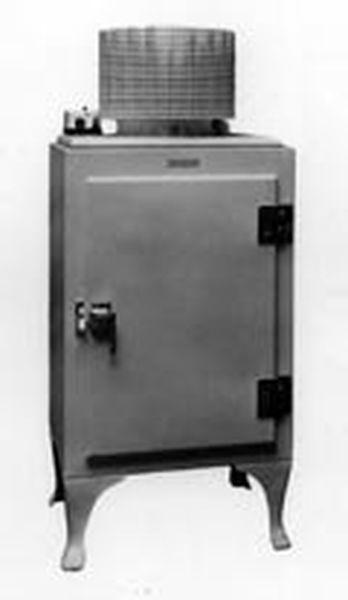
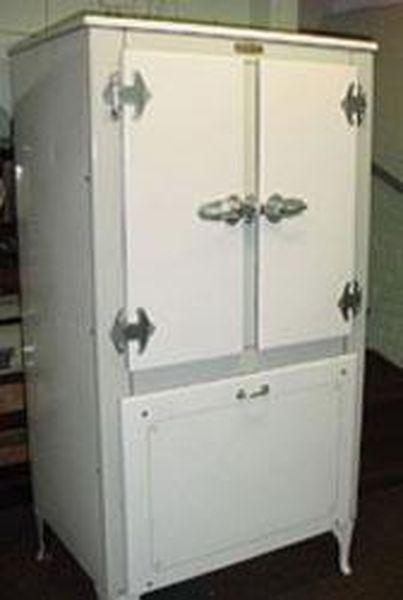
Source: katerok88.livejournal.com
In the XIX century, the washing process was, as many believe, the most time-consuming of all the hassle of housewives. Indeed, apart from the heavy manual labor in the process of washing clothes and washing agents were used that are harmful to the skin of hands. Automation washing at the time was not yet, all processes - soaking, main wash, rinse and spin drying were performed manually.


By the end of XIX century appeared the following type washing machines that are already in something reminiscent of the old Soviet-era samples of the "Volga" - reminiscent of the barrel, including the existence of a mechanism for pressing.

In this type of washing machines for actuating mechanism operated manual labor was also used. The man behind the handle of the rotating wheel, which aired through the gears move in a tank of water in which there do laundry. Washing machine of this type create the excitement of the water inside the tank, whereby the clothes rubbing against each other, and thus there was a process of washing.

Meanwhile, the washing machine became iron. Using electric motors, giving vibration led to the destruction of the tank washing machines are made of wood. Replacing wood with iron enabled soon carry another improvement. Earlier, housewives had to manually heat water on the stove, carry out and pour the heated water into the washing machine. Now iron electric washing machines have their own heating element - PETN. By the way, today Tan is one of the most common causes of breakdowns and repairs washing machines. On PETN eventually formed scale, which leads to poor heat transfer from PETN to water, thereby heating element overheats and breaks.
Toilet paper

How did our ancestors had to dodge that after spravleniya natural needs to make basic hygiene! Francois Rabelais believed that the nicer way to do this with a live duck. In ancient Rome, adapted to the needs of the sponge: it is attached to a stick and after use was placed in a bowl with salt water. Vikings wipe hairballs, Native Americans - all sorts of leaves and cobs of corn. French kings approached this issue very elegantly and doing it with lace and linen rags.
Use in this case the Chinese were the first paper, but not mere mortals, but only emperors. Much later in the paper, and passed the rest of the world: in the course went old newspapers, catalogs, almanacs. Only in 1857 New Yorker Joseph Gayetti occurred to cut the paper in neat squares and pack into bundles. He was so proud of his invention, that each sheet of typing your name. Set the name of the man who invented fold toilet paper rolls, it is not possible: the first such steel coils to produce an American paper mill «Scott Paper» in 1890.

Comb

The most ancient combs used by inhabitants of the earth can be considered fish skeletons. It is not known where and when it was first made a hairbrush, but one of the oldest ridges was found during excavations on the territory of ancient Rome. It was made from animal bone wide and eight to handle manually cut teeth, located in the region 0, 2 cm apart. Later hairbrush also made of wood, coral, ivory, tortoise shell and horns of various animals. This material was used for the ridges until the middle of the XIX century. In 1869, two brothers - Isaiah and John Hyatt - invented celluloid, which completely changed the production of combs. Elephants and turtles were saved from complete destruction, and people get cheaper ridges of material that looks very similar and coral, and ivory, and tortoise shell.
Refrigerator

At the beginning of the XX century, more precisely in 1910, the United States invented the first home refrigerator, which had mechanical cooling. A year after the opening of this machine was perfected and subjected to various modifications. Just then, a year later, in 1911, a successful American company "General Electric" ventured the first to start production of the refrigeration unit called "Odifren", which was intended for use both at home and in trade. This chiller has received the name of its creator, French physicist Marcel Odifrena, and is quite different from the original design. But that's not all advantages of modern machine. The machine, which was invented by the French physicist who first worked for the automation! Its construction Odifren developed and patented in 1895. The advantages of the revolutionary chiller excellent heat treated, no valves, seals and easy maintenance. Change the belts and lubricate the bearings had only one or two times a year. The company "General Electric" quite successfully produced such refrigeration systems for seventeen years, until 1928.
Meanwhile, not only the "General Electric" engaged in production of refrigerators. Another domestic refrigerator with automatic control has developed and created a scientist and engineer Copeland, and in 1918 the company "Kelvineytor" without losing time, launched the machine in production. During the year the company was made sixty-seven of these refrigerators.
Time passed, and in 1925 the United States began to constantly produce refrigeration units with mechanical cooling. During the year, the conveyor descended 64,000 chillers, which gave a starting point the rapid growth of production in this area, which, however, slowed down in the 30s - the fault of the economic crisis. The first refrigerator with a cooling machine was cumbersome structure: its volume is about five times the capacity of the storage products, and held it about a square meter floor. For the manufacture of wood applied enclosure and protect the thermal insulation cap. The walls of the first refrigerator was thicker than the armor of tanks at the time: the thickness of reaching 140 mm.
The refrigerant used ammonia or sulfur dioxide - not hard to guess that his leak was fraught with serious problems. Himself refrigeration unit was mounted from above or below, and the rotation of the compressor to separate motor with a belt drive. Bearings supposed to lubricate at least once a week.


Source: katerok88.livejournal.com
